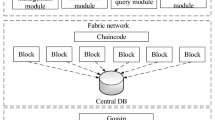Key Points
-
Patent systems have operated since 1470, and are now established in most countries. The features of these systems vary between countries, but many aspects are common to most.
-
A patent is a legal document that contains a description of a new invention, examples of how the invention might be put into practice and a concise written definition of what the Applicant is claiming to have invented (the 'Claims').
-
The main criteria for patentability are novelty, inventive step (that is, the invention must not be obvious to a person skilled in the relevant area), enablement (that is, the patent application must describe how the invention can be put into practice) and support (that is, the scope of the Claims must be justified by the description of the invention).
-
Patents entitle the patentee to prevent others from exploiting their invention in the country in which the patent was granted, usually for a period of 20 years.
-
To prevent competitors from obtaining rights in an invention, it is important to lodge a patent application as early as possible. However, this must be weighed against the aim of submitting the most comprehensive application, so that the risk of the application being rejected or challenged following grant is minimised.
-
Under the Patent Cooperation Treaty, it is possible to file an International patent application. Applications must then be filed in individual regions (such as that covered by the European Patent Convention) or countries so as to obtain one or more granted patents.
-
Following submission of a patent application and payment of fees to the relevant Patent Office, a search of relevant literature to confirm the novelty and non-obviousness of the invention is conducted by examiners. On the basis of the Search Report, the Applicant can then choose to have their Claims further scrutinized by the Patent Office, in the process called Substantive Examination.
-
The Applicant is invited to respond to any concerns raised by the Patent Office during Substantive Examination, following which the patent is granted or rejected. Depending on the number of concerns raised, and the number of countries in which patents are sought, the entire process can take up to four-and-a-half years and cost in excess of £40,000.
Abstract
Whether you work for a multi-national pharmaceutical company, a biotech start-up or a university, a knowledge of the patent system is essential for understanding how best to protect the fruits of your research. The aim of this article is to give an overview of what a patent is, how you might get one and the rights that a patent confers.
This is a preview of subscription content, access via your institution
Access options
Subscribe to this journal
Receive 12 print issues and online access
$209.00 per year
only $17.42 per issue
Buy this article
- Purchase on Springer Link
- Instant access to full article PDF
Prices may be subject to local taxes which are calculated during checkout



Similar content being viewed by others
Acknowledgements
The author would like to thank the Patent Attorneys of Frank B. Dehn & Co. for their useful comments during the preparation of this article.
Author information
Authors and Affiliations
Related links
Related links
DATABASES OF PATENT APPLICATIONS AND PATENTS
FURTHER INFORMATION
European Patent Office website
How to obtain a European patent
Countries for which international patent applications can be designated
US Patent and Trademark Office website
UK Patent Office website
Glossary
- PRIOR ART
-
All information that is available to the public (for example, by means of a written or oral description, by use or in any other way) before the priority date of the patent application.
Rights and permissions
About this article
Cite this article
Webber, P. Protecting your inventions: the patent system. Nat Rev Drug Discov 2, 823–830 (2003). https://doi.org/10.1038/nrd1200
Issue Date:
DOI: https://doi.org/10.1038/nrd1200
This article is cited by
-
Systematic analysis of the scientific-technological production on the use of the UV, H2O2, and/or Cl2 systems in the elimination of bacteria and associated antibiotic resistance genes
Environmental Science and Pollution Research (2024)
-
IntelliPatent: a web-based intelligent system for fast chemical patent claim drafting
Journal of Cheminformatics (2019)
-
Patenting of microorganisms
Nature Reviews Drug Discovery (2006)
-
Patenting antibodies
Nature Reviews Drug Discovery (2006)



